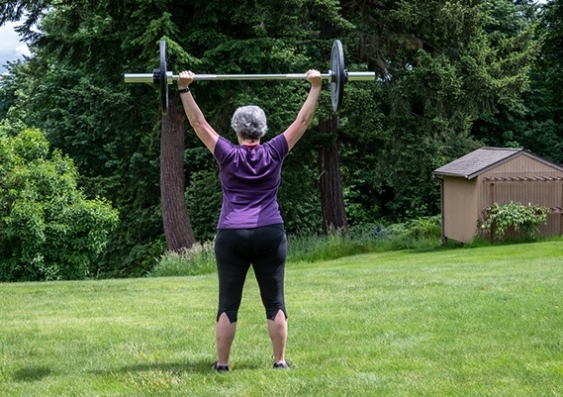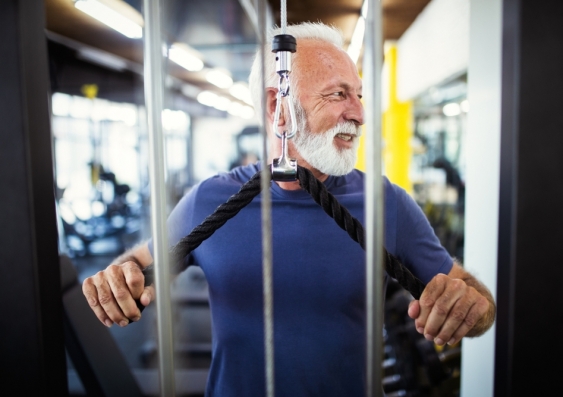Not just a guys' club: resistance training benefits older women just as much as older men
Sure, everything might come down to sex – but not when strength training is concerned.
Sure, everything might come down to sex – but not when strength training is concerned.

Sherry Landow
News & Content Producer
(02) 9065 4039
s.landow@unsw.edu.au
Men and women aged over 50 can reap similar relative benefits from resistance training, a new study led by UNSW Sydney shows.
While men are likely to gain more absolute muscle size, the gains relative to body size are on par to women’s.
The findings, recently published in Sports Medicine, consolidated the results of 30 different resistance training studies involving over 1400 participants. This paper specifically compared the results of men and women aged 50 and over.
“Historically, people tended to believe that men adapted to a greater degree from resistance training compared to women,” says Dr Amanda (Mandy) Hagstrom, exercise science lecturer at UNSW Medicine & Health and senior author of the study.
“The differences we found primarily relate to how we look at the data – that is, absolutely or relatively. ‘Absolute’ looks at the overall gains, while ‘relative’ is a percentage based on their body size.”
The paper is the first systematic review and meta-analysis to examine whether older men and women reap different resistance training results. The findings add to past research on differences in younger adults (18-50), which suggested that men and women can achieve similar relative muscle size gains.
The researchers compared muscle mass and strength gains in 651 older men and 759 older women across the 30 studies. The participants were aged between 50 and 90, with most having no prior resistance training experience.
While 50 is not typically considered an ‘older adult’, it was selected as the threshold for this study given the potential for menopausal hormone changes to influence resistance training outcomes.
“We found no sex differences in changes in relative muscle size or upper body strength in older adults,” says Dr Hagstrom.
“It’s important for trainers to understand that women benefit just as much as men in terms of relative improvement compared to their baseline.”

When looking at gains as a percentage based on body size, no sex differences were found in muscle size or upper body strength. Photo: Shutterstock.
Older men tended to build bigger muscles when looking at absolute gains, the researchers found. They were also more likely to see greater absolute improvements to upper and lower body strength.
But when it came to relative lower body strength, older women saw the biggest increases.
“Our study sheds light on the possibility that we should be programming differently for older men and women to maximise their training benefits,” says Dr Hagstrom.
The team conducted a sub-analysis of the literature to see what resistance training techniques gave the best results for each sex.
“Older men might benefit from higher intensity programs to improve their absolute upper and lower body strength,” says Dr Hagstrom.
“But older women might benefit from higher overall exercise volumes – that is, more weekly repetitions – to increase their relative and absolute lower body strength.”
Longer training durations could also help increase relative and absolute muscle size (for older men) or absolute upper body strength (for older women).
“Changes to exercise regimes should be made safely and with professional consultation,” says Dr Hagstrom.

To maximise their gains, older men might benefit more from higher intensity programs, but older women might benefit from more weekly repetitions. Photo: Shutterstock.
Feeling stronger and having bigger muscles aren’t the only benefits to resistance training.
Resistance training can offer other health benefits, like increasing a person’s stamina, balance, flexibility and bone density. It has also been shown to help improve sleep, sense of wellbeing, and decrease the risk of injury.
“Strength training is very important and beneficial to our health – especially for older people,” says Dr Hagstrom.
“It can help prevent and treat many age-related chronic diseases, like diabetes, heart disease and arthritis.”
Dr Hagstrom hopes her future research can identify more best-practice prescriptions for resistance training exercises.
“Learning more about resistance training and its benefits could help improve overall health outcomes for Australia’s ageing population,” she says.